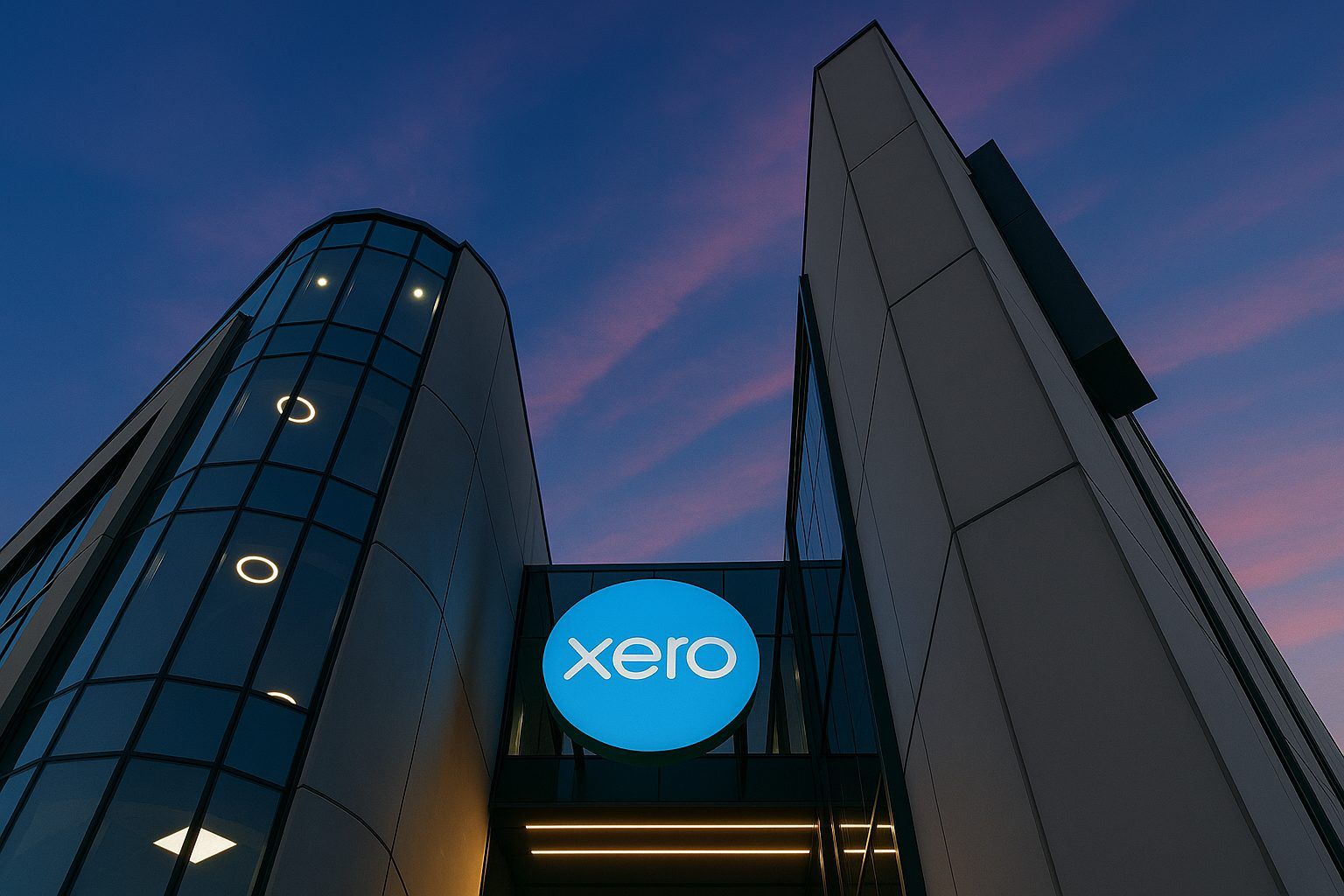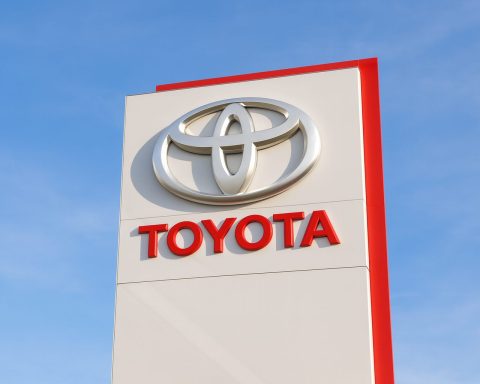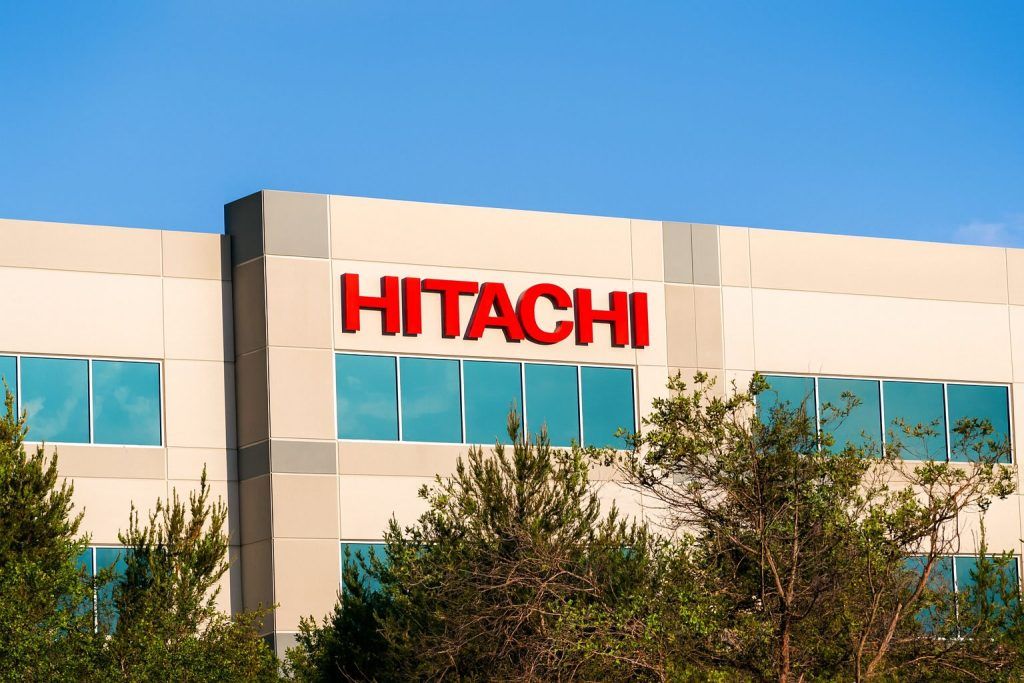Xero Limited (ASX:XRO) spent today’s session trading only slightly lower, but still pinned near the bottom of its 2025 range as investors continue to weigh a big U.S. acquisition, fresh half‑year results and a broader sell‑off in technology shares.
As of around midday in Sydney trade on 26 November 2025, Xero shares were changing hands close to A$120–121, a touch below Tuesday’s close of A$120.54. [1] That leaves the cloud accounting leader down close to 30% over the past 12 months and roughly the same year to date, even after years of strong revenue growth and expanding margins. [2]
XRO share price today: flat day, tough year
Recent price data across several market sources paints a consistent picture:
- Latest price: about A$120–121 per share in today’s trade. [3]
- Yesterday’s close (25 Nov): A$120.54, up 0.53% from A$119.90 the previous session. [4]
- 52‑week range: roughly A$116.71 (low) to A$196.52 (high). [5]
- Market capitalisation: about A$20.5 billion based on today’s price. [6]
- 52‑week performance: share price down around 29% over the past year. [7]
Price action over the last fortnight has been volatile. Since Xero’s FY26 interim results on 13 November, the stock has slid from around A$140 to the low A$120s, including a near 9–10% drop on the results day itself (closing at A$127.36 vs A$140.66 the day before). [8]
Technical services note that XRO has fallen in six of the past ten sessions, leaving the stock around 16% lower over that short window and with momentum indicators such as RSI sitting in “oversold” territory. [9]
Tech sell‑off adds pressure to XRO stock
Xero isn’t falling in isolation. Australian tech shares more broadly have been under pressure, with one recent market commentary flagging that ASX 200 technology names are down roughly 24% since their September peak amid worries about interest rates, the economic outlook and an “AI bubble.” [10]
As a high‑multiple software‑as‑a‑service (SaaS) name, Xero tends to be:
- Rate‑sensitive – higher discount rates can compress valuations on long‑duration growth stories.
- Sentiment‑driven – when investors rotate away from growth, richly priced SaaS stocks often sell off disproportionately.
That macro backdrop has collided with some very company‑specific news: a huge North American payments deal and a chunky equity raise.
Melio acquisition: strategic leap, near‑term drag
In June 2025 Xero agreed to acquire Melio, a U.S. digital payments platform focused on small and mid‑sized businesses, for US$2.5 billion plus up to US$0.5 billion in potential earn‑outs. [11] It’s the largest deal in Xero’s history and is aimed squarely at beefing up its presence in North America, a region where management has long wanted more scale.
Key points from independent analysis of the deal:
- Melio’s average revenue per user is higher than Xero’s existing SMB payments ARPU, signalling heavier‑spending customers and a more “payments‑rich” product mix. [12]
- Strategically the acquisition fits Xero’s “3×3” strategy: three core product pillars (accounting, payroll, payments) across three core regions (North America, UK, Australasia). [13]
- The transaction was funded with a mix of equity and debt, including a major institutional placement and new borrowings, shifting the balance sheet from a net cash position to leverage of roughly 2.3× net debt to EBITDA on some estimates. [14]
Market reaction has been cautious. Commentary from Fairmont Equities and others notes that:
- The deal is expected to boost revenue growth meaningfully by FY28, but
- It is dilutive to earnings over FY26–27 while Melio remains loss‑making and integration costs are absorbed. [15]
A recent article from The Bull also highlighted that Xero’s capital raising and the Melio price tag have fuelled worries about execution risk, higher interest costs and potential shareholder dilution (including from earlier convertible note issues). [16]
All of this means XRO shares are now being valued not just on core accounting software performance, but also on the market’s confidence that the Melio integration will be pulled off cleanly.
FY26 interim results: strong growth, demanding expectations
On 13 November, Xero released its FY26 half‑year numbers. On the surface, the headline metrics were impressive:
From company announcement summaries and analyst digests: [17]
- Operating revenue rose about 20% year on year to roughly NZ$1.19 billion (about A$820 million).
- Net profit after tax climbed to NZ$134.8 million, up from NZ$95.1 million a year earlier – a ~42% increase.
- Free cash flow was reported at NZ$321 million, with a free cash flow margin near 27%.
- Xero added 176,000 net new subscribers, taking total subscribers to around 4.59 million.
- Average revenue per user (ARPU) increased about 15% to nearly NZ$50 per month.
- Management flagged a Rule of 40 outcome around 44–45%, indicating that revenue growth plus free‑cash‑flow margin remains strong for a mature SaaS business.
At the same time, cost ratios and the Melio overlay tempered enthusiasm:
- Operating expenses still consumed more than 70% of revenue, and including Melio‑related transaction costs, the operating expense ratio moved closer to 77%. [18]
- Commentary from The Bull and others flagged worries over North American momentum and whether Xero can juggle expansion and profitability without slipping on either front. [19]
The result: despite double‑digit revenue and profit growth, XRO’s share price sold off sharply on the day, a clear sign that expectations – and valuations – were already high going in. [20]
Product and AI push: JAX, payments and analytics
Fundamentally, Xero continues to invest heavily in its product stack, which remains a big part of the bull case:
- Embedded bill payments and deeper payments integration (including the Melio platform) are designed to keep more transaction volume inside Xero’s ecosystem and lift ARPU over time. [21]
- The company has rolled out AI‑driven tools, including its “Just Ask Xero” and “JAX” features, aimed at automating tasks like bank reconciliation and surfacing insights for users. [22]
- The acquisition of Syft Analytics and a broad ecosystem of third‑party integrations helps Xero offer richer reporting and analytics to accountants and small businesses. [23]
Analysts at TIKR note that Xero’s H1 FY26 numbers show a business still delivering low‑20s revenue growth with expanding operating margins – operating margin around 12–13% versus mid‑single digits a year ago – as management reins in spending while leaning into higher‑value features. [24]
Valuation check: high multiples, mixed opinions
Even after this year’s sell‑off, XRO stock still trades at premium multiples relative to many ASX names.
According to StockAnalysis: [25]
- Trailing P/E: ~82×
- Forward P/E: ~94×
- Price‑to‑sales: ~10×
- EV/sales: ~8.6×
- Price‑to‑free‑cash‑flow: ~24×
Over the past 12 months Xero generated about A$2.0 billion in revenue and A$234 million in net income, with a profit margin of roughly 12% and free‑cash‑flow margin over 40%, supported by a net cash position of around A$3.0 billion even after recent financing activity. [26]
Those numbers justify a quality premium, but they also leave limited room for disappointment – which helps explain why the share price has reacted so sharply to any perceived risks around Melio or regional performance.
Analyst targets and fair‑value models
External views on fair value are anything but unanimous:
- TradingView’s consensus price target for XRO sits around A$185, with individual analyst targets ranging roughly from the mid‑A$130s to just above A$230. [27]
- The Bull reports that RBC Capital cut its rating from “Outperform” to “Sector Perform” in September, slashing its target from A$230 to A$187, citing increased business complexity and potential U.S. banking data‑access costs. [28]
- The same article notes that Jefferies has a target near A$160 and Citi around A$158, both still rating the stock positively but recognizing the new risk profile. [29]
- Simply Wall St’s narratives emphasise that some models see Xero as significantly undervalued (with fair value estimates around the low‑A$190s), while its own DCF work suggests a fair value closer to the low‑A$80s – a reminder that valuation depends heavily on growth and margin assumptions. [30]
With XRO trading around A$120 today, many of these targets imply potential upside of 40–50%+ if the company can deliver on its long‑term plan – but also meaningful downside if growth, integration or margins stall.
Technical signals: oversold but still in a downtrend
On the technical side, StockInvest currently classifies XRO as a short‑term “sell” candidate, highlighting: [31]
- A share price down more than 15% over the last 10 trading days.
- Positioning near the bottom of a wide, falling trend channel.
- RSI readings in oversold territory, suggesting the stock is stretched to the downside but not guaranteed to bounce.
- Key support levels around A$120 and resistance near A$122–127 in the short term.
Traders may see the current zone as a potential support area, but the prevailing trend remains negative until XRO can reclaim higher levels and rebuild momentum.
Key themes for XRO investors to watch
For existing and prospective Xero shareholders, several issues are likely to drive the XRO stock story into 2026:
- Melio integration and U.S. growth
Can Xero integrate Melio smoothly, hit its synergy and profitability targets, and turn a large, loss‑making acquisition into a growth and margin tailwind by FY28? Execution in North America will be under the microscope. [32] - Sustaining 20%+ revenue growth
H1 FY26 growth remains strong, but the market is asking whether that pace is durable as Xero scales. Subscriber additions, ARPU trends and regional mix (especially North America and the UK) will be critical datapoints each result. [33] - Balancing the “Rule of 40” with leverage
Xero has been comfortably above the SaaS Rule of 40 threshold, but Melio’s losses and higher interest costs could challenge that balance in FY26–27 before improving again. Investors will want to see the company stay disciplined on costs while continuing to invest in product. [34] - Competitive and regulatory landscape
Xero still faces intense competition from other cloud accounting and fintech platforms, while potential banking data access fees and regulatory shifts in key markets could influence margins and product economics. [35] - Broader tech sentiment and interest rates
If global SaaS valuations and local tech shares remain under pressure, even strong execution may not translate into immediate multiple expansion. Conversely, any easing in rates or risk appetite could provide a tailwind. [36]
Bottom line: XRO stock today
On 26 November 2025, Xero’s share price is treading water around A$120, near key support and well below its 2025 highs. The business itself continues to deliver healthy revenue growth, expanding margins and strong free cash flow, but the market is wrestling with a more complex story:
- A bigger, riskier growth agenda in North American payments,
- Higher leverage and potential dilution from capital raisings and convertible notes, and
- A tech sector that’s firmly out of favour compared with 12–18 months ago. [37]
For long‑term investors, XRO now looks like a classic high‑quality, high‑expectation growth stock that has been marked down as sentiment turned. Whether today’s price proves a buying opportunity or a value trap will depend on Xero’s ability to integrate Melio, sustain double‑digit growth and keep expanding margins over the next few reporting periods.
As always, this article is general information only and not personal financial advice. XRO is a volatile stock with company‑specific and macro risks; anyone considering an investment should do their own research and, if needed, speak with a licensed financial adviser before making any decisions.
References
1. stockanalysis.com, 2. stockanalysis.com, 3. stockanalysis.com, 4. stockinvest.us, 5. stockinvest.us, 6. stockanalysis.com, 7. stockanalysis.com, 8. www.intelligentinvestor.com.au, 9. stockinvest.us, 10. www.fool.com.au, 11. fairmontequities.com, 12. fairmontequities.com, 13. fairmontequities.com, 14. fairmontequities.com, 15. fairmontequities.com, 16. thebull.com.au, 17. www.intelligentinvestor.com.au, 18. thebull.com.au, 19. thebull.com.au, 20. www.intelligentinvestor.com.au, 21. simplywall.st, 22. www.intelligentinvestor.com.au, 23. simplywall.st, 24. www.tikr.com, 25. stockanalysis.com, 26. stockanalysis.com, 27. www.tradingview.com, 28. thebull.com.au, 29. thebull.com.au, 30. simplywall.st, 31. stockinvest.us, 32. fairmontequities.com, 33. www.intelligentinvestor.com.au, 34. www.intelligentinvestor.com.au, 35. thebull.com.au, 36. www.fool.com.au, 37. thebull.com.au







